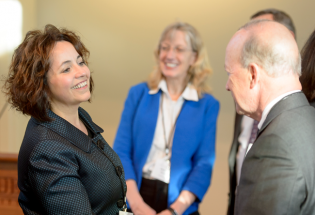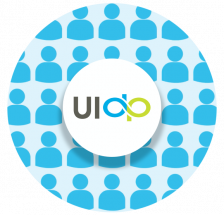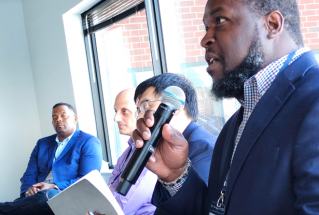Industry engagement offices shifting away from centralized model, but holistic goal endures
Excerpted from the December 2022 issue of University-Industry Engagement Advisor. UIDP members can view the entire issue here.
It wasn’t all that long ago when there seemed to be nearly unanimous agreement among industry engagement leaders that the ideal office model was a centralized structure which served as the “front door” to all partnership-related activity on campus. It was a structure like this, they reasoned, that would most naturally serve to foster the type of holistic relationship with industry partners their universities all desired.
In recent years, however, even university structures that were perceived to set the standard for this type of model have found themselves tinkering at the edges — and sometimes even more deeply. Today, a variety of models can be found — not intended to shift away from the holistic goal, but rather to serve as perhaps even more effective ways to achieve it.
“There’s not just a lot more variety, but a move to more focused groups,” says Joseph B. Havrilla, associate vice chancellor for innovation and entrepreneurship in the University of Pittsburgh’s Office of Industry and Economic Partnerships. This less centralized arrangement employ separate but related group “like in my case,” Havrilla explains, “[we have] one focused on commercialization and translation activities with industry and with VCs, and separate groups focused on philanthropy, internships, and student hiring. And I think it’s for a very good reason.”
That reason, he asserts, stems from a desire to speak the language of business. “Most large companies are structured in a manner where they have staff and research functions that are separate,” he says. “Philanthropy is a separate group as well, and each wind up dealing with different people.”
This trend away from a centralized structure also rings true to Keith Marmer, chief innovation & economic engagement officer with Partners for Innovation, Ventures, Outreach & Technology (PIVOT Center) at the University of Utah. “I definitely think that’s fair to say,” he states, noting that he has heard about a number of similar structural adjustments “in chatting with folks around the country.”
Some of this trend, he adds, started as federal research funding began to flatten out and industry started looking for increased sources of research funding. “But it spans that holistic view that industry partnerships could also improve access to quality jobs after graduation, engagement of alumni, and recognition of our mission to do public good,” he says. “If anything, that has increased in nature, and as that increase has come about, it probably in some way is driving this broadening of models.”
The PIVOT Center itself has “pivoted” somewhat. It was initially established as the university’s focal point for industry interaction, and the university recently announced the creation of new Corporate Engagement Office.
“Looking back at some of the corporate engagement centers, while I think the idea is great there was not enough buy-in at some universities,” adds JoonHyung Cho, director of corporate relations and business development at the University of Virginia. “Universities are sometimes conservative when it comes to change of structure — more traditional in how things are organized.”


